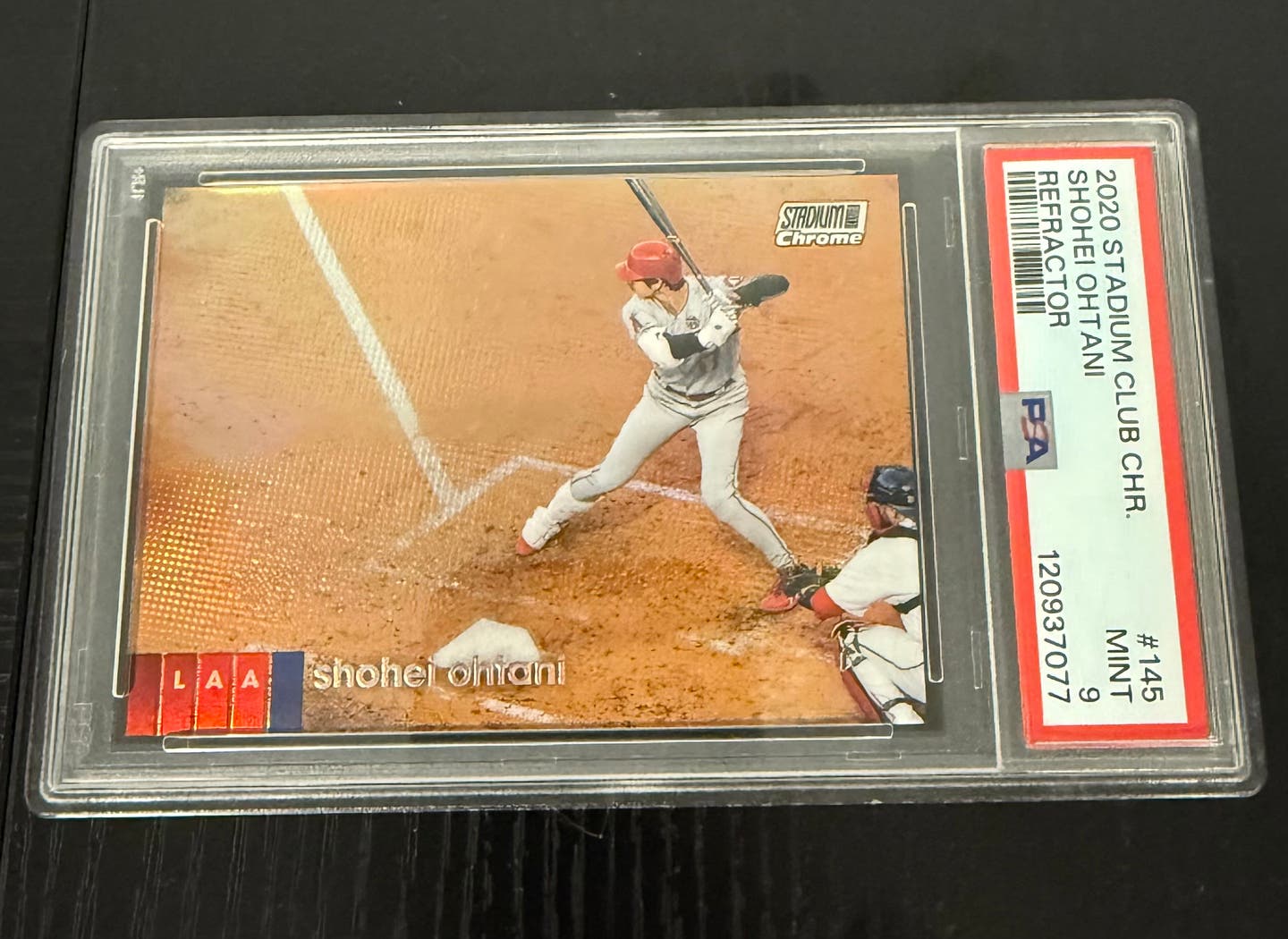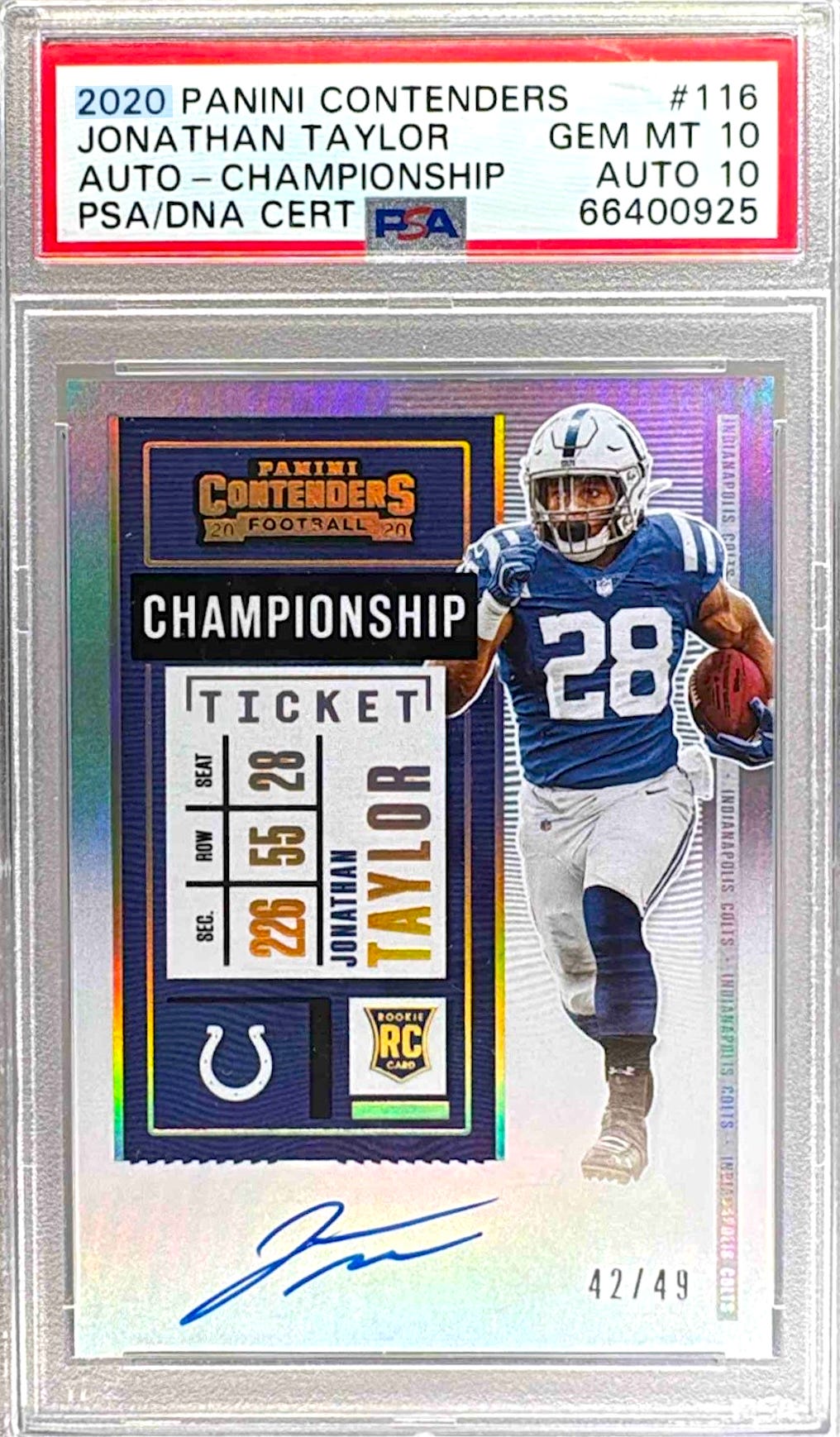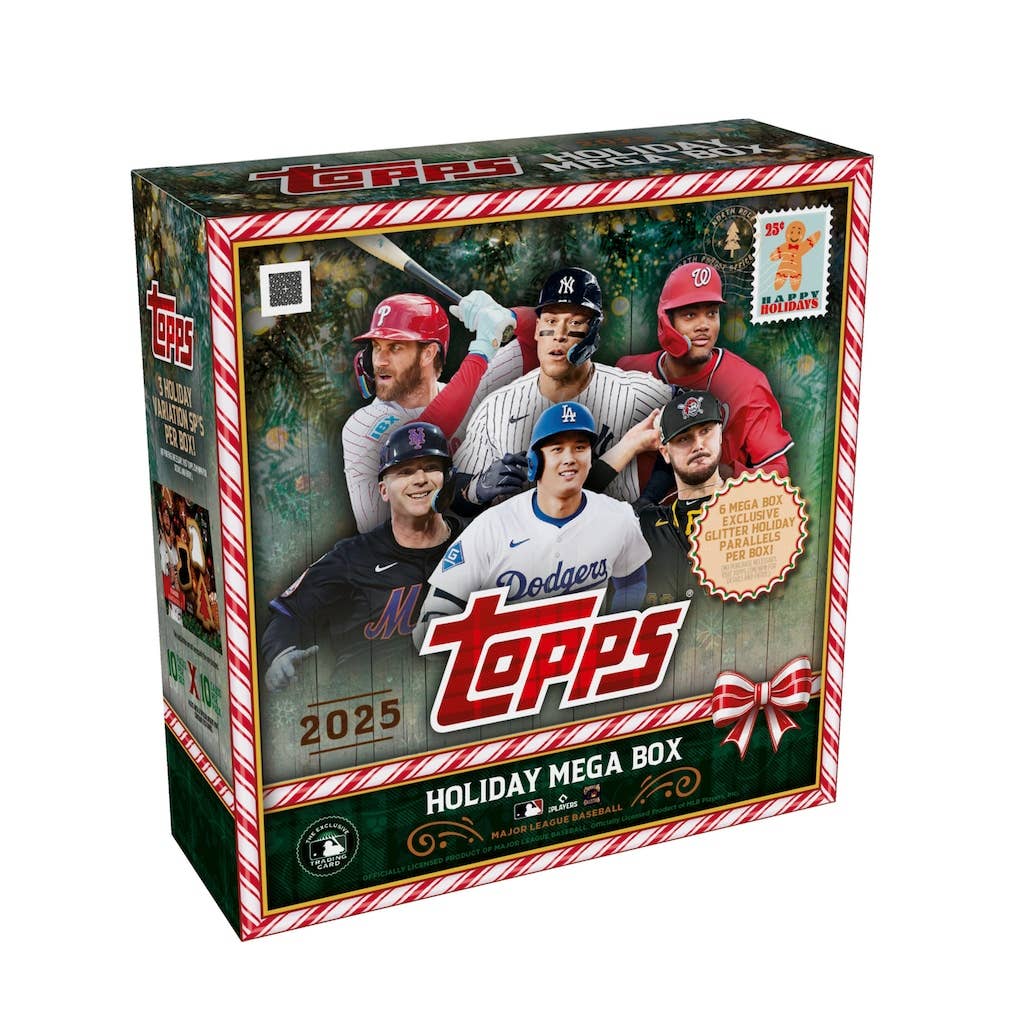Willie Mays
1966 Topps Celebrates Anniversary Gold
By Reid Creager
During one of my interviews with the “Father of the Modern-Day Baseball Card,” I suggested to Sy Berger that the design for the 1966 Topps Baseball set – featuring the team name in a diagonal color strip in the upper left corner – might have been inspired by the way kids would often stretch rubber bands diagonally around the top and bottom corners.
Like any good father, Sy let me down easy. He said my theory was interesting, and quickly moved on to something else.
I always figured there had to be a reason for such an unspectacular design, a year after the iconic ’65 release and a year before the equally striking ’67 issue. Nonetheless, the star-studded ’66 set that includes 38 Hall of Famers celebrates its 50th anniversary with a solid standing among vintage collectors.
Only three of those HOFers were ’66 rookies: pitchers Jim Palmer, Don Sutton and Ferguson Jenkins. So the star that gets top billing in this set is the single or short print, with the seventh series totaling a whopping 43 short-printed cards. Add consistent centering problems throughout, and you have one of the more challenging Topps sets of the decade.
“The shows I go to, if I get any of the ’66 short prints, they’re gone in a couple shows,” said Paul Korst of Cleveland-area Stampcards, one of the most active dealers in the Midwest. “And that’s in any condition, even beat-up ones. If you price them reasonably, they will go.”
Hats off to change
The year 1966 was a harbinger of change, from pop culture to human rights. Weary and wary of the touring grind and vilified for John Lennon’s remark that the Beatles were “more popular than Jesus,” the Fab Four performed their last-paying concert on Aug. 29 in San Francisco. Fourteen days after this symbolic end to the Beatles’ innocent, accessible persona, a foursome of fun, wholesome American counterparts was unveiled when The Monkees TV show aired on NBC.
The civil rights movement gained more momentum on June 13, when the Supreme Court ruled in Miranda v. Arizona that all criminal suspects must be advised of their rights before interrogation. On Oct. 15, the Black Panthers were formed to help protect the rights of African-Americans.
Major League Baseball, which until the 1962 debut of the Houston Colts had never had a team from the South, took another step in this evolving social climate. The Milwaukee Braves moved to Atlanta for the ’66 season (though baseball would return to Milwaukee four years later). The move was originally scheduled for 1965 but was delayed for a year after a Milwaukee car salesman named Bud Selig fought it in court and won an injunction.
Maybe due to the legal uncertainty, Topps wasn’t swift to photograph players in their new Braves caps. Not until the sixth and seventh series do we see players wearing the Atlanta script “A,” with #466 Ken Johnson the first so pictured. (Hank Aaron appears in a regal new-cap portrait at #500.) Up to that point, it’s a mish-mash of hatless Braves players and others with generic black or airbrushed caps.
Collectors have never been enamored of hatless photographs, so this extra sampling of unauthentic-looking pictures couldn’t have helped the set’s popularity. Glenn Codere, who put together his ’66 set over 15 years from his home in Glasgow, Scotland, cited the capless factor in articulating its unspectacular visual appeal.
“On the face of it, the 1966 Topps set has everything I like: a simple, uncomplicated design, a good set size with 598 cards, a great selection of star names – including early cards of many of my 1968 Tigers heroes – and enough SPs to keep it interesting. The problem is, I’m not really all that keen on the set.
“I can’t really put my finger on it. Maybe it’s the photography, maybe the design is just too stark; perhaps it’s the seemingly endless number of capless head shots.”
The most notorious hatless wonder from ’66 features a guy who made history that year by becoming the first player to win the MVP award in both leagues. The picture of Frank Robinson (#310) wearing an obvious Cincinnati Reds jersey vest on a Baltimore Orioles card is definitely not ideal.
Worse, both Robinson and Milt Pappas – the two principals in one of the most lopsided trades ever – both appear as Orioles. This is obviously because Pappas (#105) is a first-series card; so it’s likely that when the trade was announced on Dec. 9, 1965, Topps had already completed production on that series. (The other players in the trade – Jack Baldschun and Dick Simpson – are identified correctly as Reds because those cards all appeared in later series, though both are capless.)
Drama and short prints
Four of the set’s most popular cards appear in the first series, including two that feature longtime California rivals who make up for some of the hatless mediocrity. Topps made Willie Mays card #1 on the heels of his MVP 1965 season when he hit 52 home runs; the grinning, natural-looking pose as he prepares to smack a ball into his glove screams “Say Hey’s Heyday.” Because the card is one of the hardest in the set to find well centered, legitimate Near-Mint issues sell for more than $200. PSA 8s approach four figures.
The Sandy Koufax card – his last regular Topps issue – is a stunningly poignant portrait, seemingly foreshadowing his career’s premature end due to an arthritic elbow. Because the card (#100) doesn’t have as acute centering issues as the Mays, it’s much more affordable but no less desirable.
Annual cardboard behemoths Mickey Mantle (#50) and #30 Pete Rose were double-printed on sheets, meaning they’re more abundant but less valuable than some of their other ’60s issues. And speaking of megastars, the heavenly gaze of (#300) Roberto Clemente, bat on shoulder, rivals the Koufax portrait for wistful and dramatic impact.
The ’66 set wasn’t totally devoid of design innovation. Those diagonal strips with the team names are color-coded, one for a pair of teams in either league. For example: Yankees and Dodgers are orangish-red; Cubs and White Sox, butterscotch; Reds and Twins, blue.
The diagonal team name isn’t all that’s off-kilter: Cards often have tilted centering or a diamond cut, making perfectly framed copies rarer than in other years (roughly 12,800 unqualified PSA 9s as of late February, compared to more than 20,000 for the ’65 set). This adds another layer to the challenge of the short prints and high numbers.
For many ’66 collectors, the short-print discussion begins with the Bart Shirley/Grant Jackson rookie (#591), generally regarded as the toughest card in the set. But collectors who see the Shirley/Jackson as the ultimate rarity of the short-print crop may be mistaken.
At last check, there were 16 PSA 9s for Shirley/Jackson – but only nine PSA 9s for another short-print, Dave “Swish” Nicholson (#576). In fact, the Nicholson card had been graded nearly 200 fewer times than Shirley/Jackson (354 to 155). Also, the short-printed Nate Colbert/Greg Sims rookie (#596) had only 10 PSA 9s, with only 254 graded.
Despite what that math says, sale prices for the Shirley/Jackson card are proof that sometimes in collecting, perception trumps facts. A PSA 7 Colbert/Sims recently sold for $19.19 on eBay. A PSA 7 Shirley/Jackson? $260 – this despite the fact that population numbers for both cards in a 7 and 8 are virtually identical.
So what’s the source of this perception? “It’s likely due to a perfect storm of short printing, the rumored creation of an artificial market over the past five-six years via dealer hoarding, and subsequent panic among hobbyists in reaction to those rumors,” Codere said. “As the story spread, the value and scarcity rose.”
Stampcards’ Korst said it’s more than a rumor. “I know who one of the big drivers on this was. … He’d go to all the big shows and scour eBay, focusing on high-demand cards, like the 1973 high-number checklist (#588) as well as the ’66 Jackson. He used to have a ton of the Grant Jackson and have them all priced crazy.
“He even told me a story that he met Grant Jackson once and told him, ‘I was the one who pushed your rookie card up to $100.’ ”
And that’s in lower grades, Codere said. “Only two or three years ago, it was still possible to find raw, low-grade examples on the market at reasonable prices. I picked up mine – a VG example with a very slight surface crease – in 2012 for $18 through an online dealer. But today it’s rare to see this card in any condition for under $100.”
Other tough short prints that often sell for more than $100 in Near-Mint or better condition include Cards rookies with Joe Hoerner (#544), Horace Clarke’s rookie card (#547) and Choo Choo Coleman (#561). The short-print challenge and expense is heightened by the presence of three Hall of Famers: Willie McCovey (#550), Billy Williams (#580) and Gaylord Perry (#598). Perry is easily the toughest in high grade, possibly because it’s the last card in the set.
Semi-highs under the radar
Overall, the scarcest three PSA 9s in the set (not including variations) are all rookie cards. Card #482 Boccabella/Dowling – the last card in the set to get a PSA Mint grade – and #539 Heath/Sembera both are at a population of four; right behind is #442 Orioles rookies Barnowski/Watt with five.
By the way, the variations also keep collectors busy, with 29 listed in the Standard Catalog of Vintage Baseball Cards, led by the three Don Landrum versions when Topps tried to address an embarrassing wardrobe malfunction.
Korst said semi-highs like the Boccabella card are very underrated, tough finds. He recalls buying a vending box of ’66 semi-highs (Nos. 447-522) a few years ago: “Centering was all over the place. Seventy-80 percent of them were out the window. You couldn’t even send them in for grading.”
Tony Oliva (#450) and Bobby Richardson (#490) are among the toughest semi-highs. In fact, Korst wonders whether some of those semi-highs might be short prints.
“In that last series, there are 76 cards (Nos. 523-598). You’ve got the same number of cards in the semi-highs. You can’t tell me they didn’t use the same sheet template that they did for the high numbers. So I think that even in those lower series there are some short prints.”
The ’66 set is also unique in what it left out: no World Series subset, ending a six-year Topps run on that theme; no Astros team card due to an ongoing legal dispute over the club’s nickname; and no Steve Carlton card despite the fact that Topps issued Lefty’s rookie in 1965, when he posted a strong 2.52 ERA in 15 games with the Cardinals. (The fact that Carlton didn’t start the ’66 season with the Cards and didn’t pitch for them until July 31 may have been a factor.)
“No matter what the card designs look like, they’re right in there with the ’65 and ’67 in terms of the demand I’ve seen,” Korst said. “People who know what to look for can do especially well.”
The short list
The 43 short prints from the 1966 Topps Baseball set, according to the Standard Catalog of Vintage Baseball Cards:
#524 Giants rookies w/Ollie Brown; #525 Gary Bell; #526 Twins team; #528 Jesse Gonder; #532 Aurelio Monteagudo; #533 Jerry Adair; #535 Willie Davis; #538 Bob Allen; #540 Denny McLain; #541 Gene Oliver; #543 Roger Craig; #544 Cardinals rookies w/Joe Hoerner; #545 Dick Green; #547 Horace Clarke RC; #548 Gary Kroll; #550 Willie McCovey; #551 Bob Purkey; #552 Birdie Tebbetts; #554 Jim Northrup; #555 Ron Perranoski; #556 Mel Queen; #557 Felix Mantilla; #559 Roberto Pena; #561 Choo Choo Coleman; #564 Bob Chance; #565 Jimmy Piersall; #566 Mike Cuellar; #567 Dick Howser; #569 Orlando McFarlane; #570 Art Mahaffey; #571 Dave Roberts; #576 Dave Nicholson; #577 Jack Lamabe; #578 Chi Chi Olivo; #580 Billy Williams; #583 Tigers team; #586 Claude Raymond; #589 Lou Klimchock; #590 Bill Skowron; #591 NL rookies w/Grant Jackson; #593 Doug Camilli; #596 Astros rookies w/Nate Colbert; #598 Gaylord Perry.
Reid Creager is a frequent contributor to SCD. He can be reached at reidcreager@yahoo.com.








